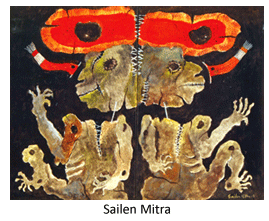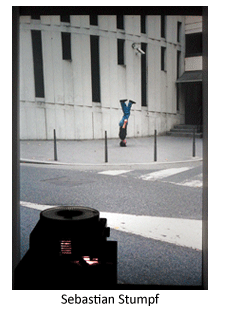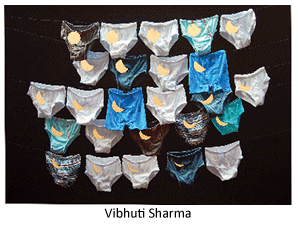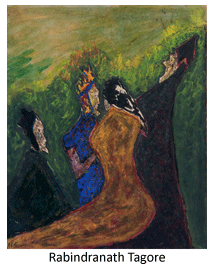- Prelude
- Editorial
- Manjit Bawa
- Husain's Calcutta
- Vivan's Visionary Reconstruction of History at Victoria Memorial, 1998
- The Remaking of Indian Painting
- Picasso Re-visited
- Benodebehari Mukherjee: A Recluse and the Centenary Show
- In Past and Present Continuum Speaking to Thota Vaikuntam
- The Importance of Being Husain
- Image-making to Image-circulation: Implicated Image(ry)
- 153 Years Old yet Young at Heart: Mumbai's Sir JJ School of Art
- Two Decades: A Critical Insight by an Art Critic and an Artist
- Biedermeier Style: Biedermeier Furniture
- Vacheron Constantin
- The Irony of Andy Warhol
- Then and Now: An Indian Perspective to the Art Market 1990-2010
- Pablo, Andy, Here I Come
- What Happened and What's Forthcoming
- Bid's Got Hammered?
- Anish Kapoor at National Gallery of Modern Art in Delhi and Mehboob Studio in Mumbai
- Tribute to Hemanta Misra: the “Calcutta Group” Painter
- Art Events Kolkata
- Mumbai Art Sighting
- Art Bengaluru
- Exploring the Riverine Culture of Bengal
- Alternative art practices define Bangalore
- India Art Summit Turns Three
- An Aesthetic Fair
- SSVAD: A New Arts Centre in Santineketan
- Visible Invisible by Siraj Saxena
- A Fleeting World : Paintings by Sunil De
- Previews
- In the News
ART news & views
Art Events Kolkata
Volume: 3 Issue No: 12 Month: 1 Year: 2011
The Month that was
Nevember-December 2010
by Mrinal Ghosh
The Art of Ajit Chakraborty and Sailen Mitra
Birla Academy 9 to 26 November
 Both Ajit Chakraborty (1930 - 2005), the renowned sculptor and Sailen Mitra (1933 - 2009), the eminent painter were very active members of the Kolkata based artists' group 'Society of Contemporary Artists'. As a mark of tribute to them after their demise Birla Academy presented this show, which was more or less retrospective in nature, to highlight their contribution in contemporary art. As artists both of them came to lime light during the decade of 1960-s. Chakraborty was disciple of Pradosh Dasgupta at Government College of Art and Craft,
Both Ajit Chakraborty (1930 - 2005), the renowned sculptor and Sailen Mitra (1933 - 2009), the eminent painter were very active members of the Kolkata based artists' group 'Society of Contemporary Artists'. As a mark of tribute to them after their demise Birla Academy presented this show, which was more or less retrospective in nature, to highlight their contribution in contemporary art. As artists both of them came to lime light during the decade of 1960-s. Chakraborty was disciple of Pradosh Dasgupta at Government College of Art and Craft,  Kolkata. Later he studied sculpture with Prof. Jan Kavan at Prague during 1958 61 on cultural exchange scholarship. His sculptures displayed in this exhibition showed dexterity in naturalist rendering and impressionist sobriety. Apart from this basic trait of artistry he showed his originality in architectonic structural display of form positing deeper human values in his more developed works. Mitra experimented with various forms in his paintings through out his life. The earliest work in this show titled 'Starvation' of 1962 was display of social realism in expressionist-cubist style. Along with this modernist approach during 1970-s and 80-s he experimented with indigenous traditional form. Then shifted to abstract expressionist idioms to highlight the decay of human values.
Kolkata. Later he studied sculpture with Prof. Jan Kavan at Prague during 1958 61 on cultural exchange scholarship. His sculptures displayed in this exhibition showed dexterity in naturalist rendering and impressionist sobriety. Apart from this basic trait of artistry he showed his originality in architectonic structural display of form positing deeper human values in his more developed works. Mitra experimented with various forms in his paintings through out his life. The earliest work in this show titled 'Starvation' of 1962 was display of social realism in expressionist-cubist style. Along with this modernist approach during 1970-s and 80-s he experimented with indigenous traditional form. Then shifted to abstract expressionist idioms to highlight the decay of human values.
"Where am I'
Experimenter. 12 November to 4 December
 Curated by Barbara J. Sceuermann this show brings together four artists from Germany: Anja Ciupka, Stefan Panhans, Sebastian Stumpf and Claudia Weiser, who through their presentations raise in an unconventional way the question of personal identity of an individual within his/her surrounding environment. 'Not restricting itself to location in the literal, but also in the figurative, the show explores where one is located in life and reflective environment'. Claudia Weiser covers the gallery space with black/white copies of 19th century photographs of Belgium interiors and thus creates an imagined new space. Stefan Panhans creates an 8mm long video titled 'Sorry' and shows sophisticated urban people within a train compartment, their relation and contradiction with one another. Anja Ciupka in her work 'Me' creates austere text demonstrating the diversity of roles and functions people naturally take in their life. Sebastian Stumpf explores the relation between his own body and public interior and exterior space. The show 'provides an insight into shifting values of today's society and comments on our position within the dynamic reality of boundaries that we define our life by'.
Curated by Barbara J. Sceuermann this show brings together four artists from Germany: Anja Ciupka, Stefan Panhans, Sebastian Stumpf and Claudia Weiser, who through their presentations raise in an unconventional way the question of personal identity of an individual within his/her surrounding environment. 'Not restricting itself to location in the literal, but also in the figurative, the show explores where one is located in life and reflective environment'. Claudia Weiser covers the gallery space with black/white copies of 19th century photographs of Belgium interiors and thus creates an imagined new space. Stefan Panhans creates an 8mm long video titled 'Sorry' and shows sophisticated urban people within a train compartment, their relation and contradiction with one another. Anja Ciupka in her work 'Me' creates austere text demonstrating the diversity of roles and functions people naturally take in their life. Sebastian Stumpf explores the relation between his own body and public interior and exterior space. The show 'provides an insight into shifting values of today's society and comments on our position within the dynamic reality of boundaries that we define our life by'.
'Ecriture and few other things'
Manjari Chakraborty at Akar Prakar. 13 to 30 November.
 Manjari is a Santiniketan based artist working consistently since 1990 after completing her MFA from Kala Bhavan, Santiniketan in that year. Her art grows from ecriture, that is some sort of calligraphy or art of writing or scribbling. She prefers to scribble on canvas out of which forms grow. Some times they are linked to the natural, some times defy any such direct link. Construction is the basic element of her art. She works with clay or paper pulp and creates various forms reflecting on various sorts of sensations of life. In the present solo she has shown large canvases with abstract form, black and white pen and ink drawings accumulating useful things of life. There is also three-dimensional presentation of these forms. Out of her feminine self Manjari here explores the nuances of beauty that surrounds the life.
Manjari is a Santiniketan based artist working consistently since 1990 after completing her MFA from Kala Bhavan, Santiniketan in that year. Her art grows from ecriture, that is some sort of calligraphy or art of writing or scribbling. She prefers to scribble on canvas out of which forms grow. Some times they are linked to the natural, some times defy any such direct link. Construction is the basic element of her art. She works with clay or paper pulp and creates various forms reflecting on various sorts of sensations of life. In the present solo she has shown large canvases with abstract form, black and white pen and ink drawings accumulating useful things of life. There is also three-dimensional presentation of these forms. Out of her feminine self Manjari here explores the nuances of beauty that surrounds the life.
'Rooted Landscapes'
Paintings by Rini Dhumal at Gallery Sanskriti. 19 to 30 November.
 In the 35 paintings displayed in this exhibition Rini Dhumal, the Baroda based painter, showed her commitment towards a rooted indigenous identity. There is an amalgamation of primitive vigor and folk sobriety in her works in which, albeit through mythical imageries, she portrays a deep inner psyche of the female. The concept note mentions, 'incarnation of quintessential Indian woman, quiet, with aloof confidence and devoid of fragility, dominate the earthly landscapes. Stories of displacement, chance encounters and tales of far-away lands, integrating with symbolism and perception, are all part of her oeuvre'. A book on her titled 'Rooted Landscapes Art of Rini Dhumal' was released on the first day of the exhibition.
In the 35 paintings displayed in this exhibition Rini Dhumal, the Baroda based painter, showed her commitment towards a rooted indigenous identity. There is an amalgamation of primitive vigor and folk sobriety in her works in which, albeit through mythical imageries, she portrays a deep inner psyche of the female. The concept note mentions, 'incarnation of quintessential Indian woman, quiet, with aloof confidence and devoid of fragility, dominate the earthly landscapes. Stories of displacement, chance encounters and tales of far-away lands, integrating with symbolism and perception, are all part of her oeuvre'. A book on her titled 'Rooted Landscapes Art of Rini Dhumal' was released on the first day of the exhibition.
'The Story of the Multiples': An Exhibition of New-Media Works.
Emami Chisel Art. 22 Nov. to 4 Dec.
 Comprising of installation, video, video-installation and multimedia works by 14 contemporary artists from all over India, most of whom are young and upcoming, the exhibition showcases various sorts of experimentations with new media, going beyond the conventional norms of expressions. Dissecting the contemporary existential dilemma in unconventional language is the prime trait of the show. Participating artists are Anuradha Pathak, Muktinath Mondal, Neha Thakar, Malavika Mandal Andrew, Dipyaman Kar, Dhrupadi Ghosh, Vibhuti Sharma, Lochan Upadhyay, Pratik Sagar, Richa Negi, Tushar Joag, Sujay Mukherjee, Chatrapati Dutta and Sharmila Samant.
Comprising of installation, video, video-installation and multimedia works by 14 contemporary artists from all over India, most of whom are young and upcoming, the exhibition showcases various sorts of experimentations with new media, going beyond the conventional norms of expressions. Dissecting the contemporary existential dilemma in unconventional language is the prime trait of the show. Participating artists are Anuradha Pathak, Muktinath Mondal, Neha Thakar, Malavika Mandal Andrew, Dipyaman Kar, Dhrupadi Ghosh, Vibhuti Sharma, Lochan Upadhyay, Pratik Sagar, Richa Negi, Tushar Joag, Sujay Mukherjee, Chatrapati Dutta and Sharmila Samant.
'Rabindra Chitravali': Paintings of Rabindranath Tagore.
November 25
 Edited with a critical introduction by Prof R Siva Kumar to be published by Pratikshan Publications of Kolkata in association with Visva-Bharati with support from Ministry of Culture, Government of India.
Edited with a critical introduction by Prof R Siva Kumar to be published by Pratikshan Publications of Kolkata in association with Visva-Bharati with support from Ministry of Culture, Government of India.
In a press conference held on 25 November at Town Hall Pratikshan and Visva-Bharati announced the publication of the book on the occasion of 150th birth anniversary of Rabindranath. Expected date of publication is May 2011. It will be 4-volume boxed set with 1400 pages containing 1800 paintings and drawings of Rabindranath. Its general price is Rs 20,000.00 (per set), and Rs 10,000.00 for subscribers.
Ganesh Pyne: His Mahabharata
CIMA Gallery. 3 December to 8 January 2011.
 Myths and epics are always a favorite theme in the paintings of Ganesh Pyne. In this series of 44 paintings and jottings he has recreated various episodes and characters of the great epic Mahabharata. According to Pyne, 'There is no happiness in Mahabharata. There is vast royal wealth; there is invincible bravery. Alongside these, there is baseness, merciless cruelty, omnipresent violence, revenge, and laments over losing every thing. … No other epic in this country is as haunted by death as Mahabharata.' The tragic void generated due to such death caused by inconsequential violence is the primary theme of these paintings. 'Mahakaal' or eternal time is his prime character. The concept note of the exhibition states, 'Pyne's paintings have to do with questions of morality, and of illusion and reality. This series gives him the opportunity to bring together the three aspects of his being the reader of literature, the painter and the self-questioner.'
Myths and epics are always a favorite theme in the paintings of Ganesh Pyne. In this series of 44 paintings and jottings he has recreated various episodes and characters of the great epic Mahabharata. According to Pyne, 'There is no happiness in Mahabharata. There is vast royal wealth; there is invincible bravery. Alongside these, there is baseness, merciless cruelty, omnipresent violence, revenge, and laments over losing every thing. … No other epic in this country is as haunted by death as Mahabharata.' The tragic void generated due to such death caused by inconsequential violence is the primary theme of these paintings. 'Mahakaal' or eternal time is his prime character. The concept note of the exhibition states, 'Pyne's paintings have to do with questions of morality, and of illusion and reality. This series gives him the opportunity to bring together the three aspects of his being the reader of literature, the painter and the self-questioner.'